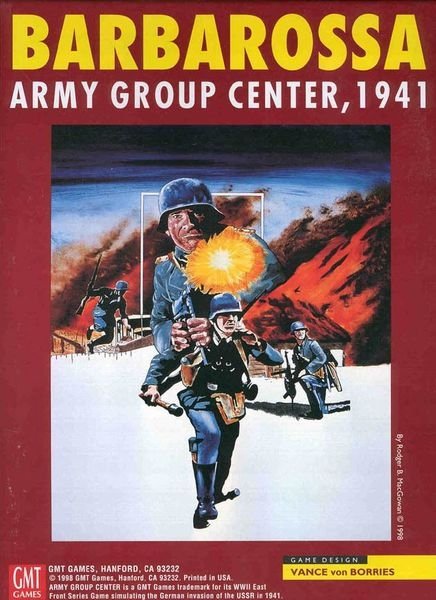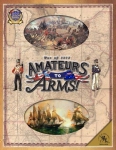-
Załączniki bezpieczeństwa
Załczniki do produktuZałączniki dotyczące bezpieczeństwa produktu zawierają informacje o opakowaniu produktu i mogą dostarczać kluczowych informacji dotyczących bezpieczeństwa konkretnego produktu
-
Informacje o producencie
Informacje o producencieInformacje dotyczące produktu obejmują adres i powiązane dane producenta produktu.GMT Games
-
Osoba odpowiedzialna w UE
Osoba odpowiedzialna w UEPodmiot gospodarczy z siedzibą w UE zapewniający zgodność produktu z wymaganymi przepisami.
We are happy to present the long-awaited second edition of this fascinating game. It stands as the first in its series to benefit from a full system overhaul. We have rewritten all first edition game rules for clarity and simplification and then reorganized it for readability. Some old rules details were dropped, others added. We then thoroughly reviewed the orders of battle in light of considerable information that has come to light in the years since the first edition was published. Likewise, the charts and tables have benefitted from some small adjustments. Overall, the whole game system is greatly improved for your enjoyment.
Historical Setting
June 1941 -- Army Group Center hurls itself through the Soviet border defenses, and its two Panzer groups race headlong toward Minsk. Behind them lie the remnants of the Soviet Western Front -- almost a million men in four armies. The Soviets are stunned by the German Blitzkrieg. Their responses are slow, confused, and governed by pre-war contingency plans made obsolete by the speed of the German advance. In little more than a week, the German panzer spearheads meet east of Minsk. Though isolated units continue to fight, the entire Soviet Western Front has ceased to exist!
The Germans' next target is Smolensk, but the Soviets resist more effectively. Entire armies are dispatched from other parts of the Soviet Union as the true scope of the Minsk pocket disaster and the magnitude of the German threat become known. Soviet counterattacks, especially around Lepel, are thrown back with horrific losses. Once again the Panzer Groups charge eastward, creating yet another huge Soviet pocket west of Smolensk. The Soviets resist savagely. Smolensk falls on July 13th, but the pocket does not close. Many Soviet units escape to fight another day.
Hitler now makes a fateful decision and overrides his generals. Over half of Army Group Center's armored and air formations are diverted south to take Kiev or north to isolate Leningrad. No longer under heavy pressure, the Soviets gain time to form solid fronts around Vyazma and Bryansk. Did Hitler's decision cost the Germans the war? Play Barbarossa: Army Group Center and find out for yourself.
Components:
- Four 22x34 inch full-color maps (Series Maps C, D, H, and I)
- One 22x8.5 inch map (Map WA)
- 1120 multi-colored die-cut ½ inch counters
- One 48 page Rule Book
- One 40-page Play Book
- Three 11 x 17 Scenario Cards with map and set up
- Player Aid Cards: five two-sided Set-Up cards, Soviet and Axis Air Status cards, two 11x17 two-sided game chart cards, six cards with additional charts and tables.
Game Features
- Eight scenarios allow players to vary their level of involvement, complexity, and starting point, from introductory to full campaign
- An asymmetrical sequence of play that highlights Axis armored breakthroughs and Soviet difficulties in combined arms warfare. This includes a “non-op” Soviet HQ system to simulate the rigid, yet fragile, Soviet Command structure
- Detailed air rules which integrate with land combat and weather rules
- Incredibly detailed Order of Battle, including special coverage of artillery, rocket artillery, engineers, bridge units, armored trains, and much more
- Modifications to the proven “EFS” include many revised rules and procedures, as well as new Order of Battle information
- Extensive bibliography and design/historical notes
| TIME SCALE | 2 days per turn |
| MAP SCALE | 5 miles per hex |
| GROUND UNIT SCALE | Division/Regiment |
| AIR UNIT SCALE | 40-80 aircraft per counter |
| NUMBER OF PLAYERS | One to four |
Awards & Honors (First Edition)
1998 Charles S. Roberts Best World War II Board Game Nominee
1998 Charles S. Roberts Best Wargaming Graphics Nominee
Second Edition Design Credits:
DESIGNER: Vance von Borries
DEVELOPERS: Gary Burgess, Dick Vohlers
Original Research: Thomas F. Burke












